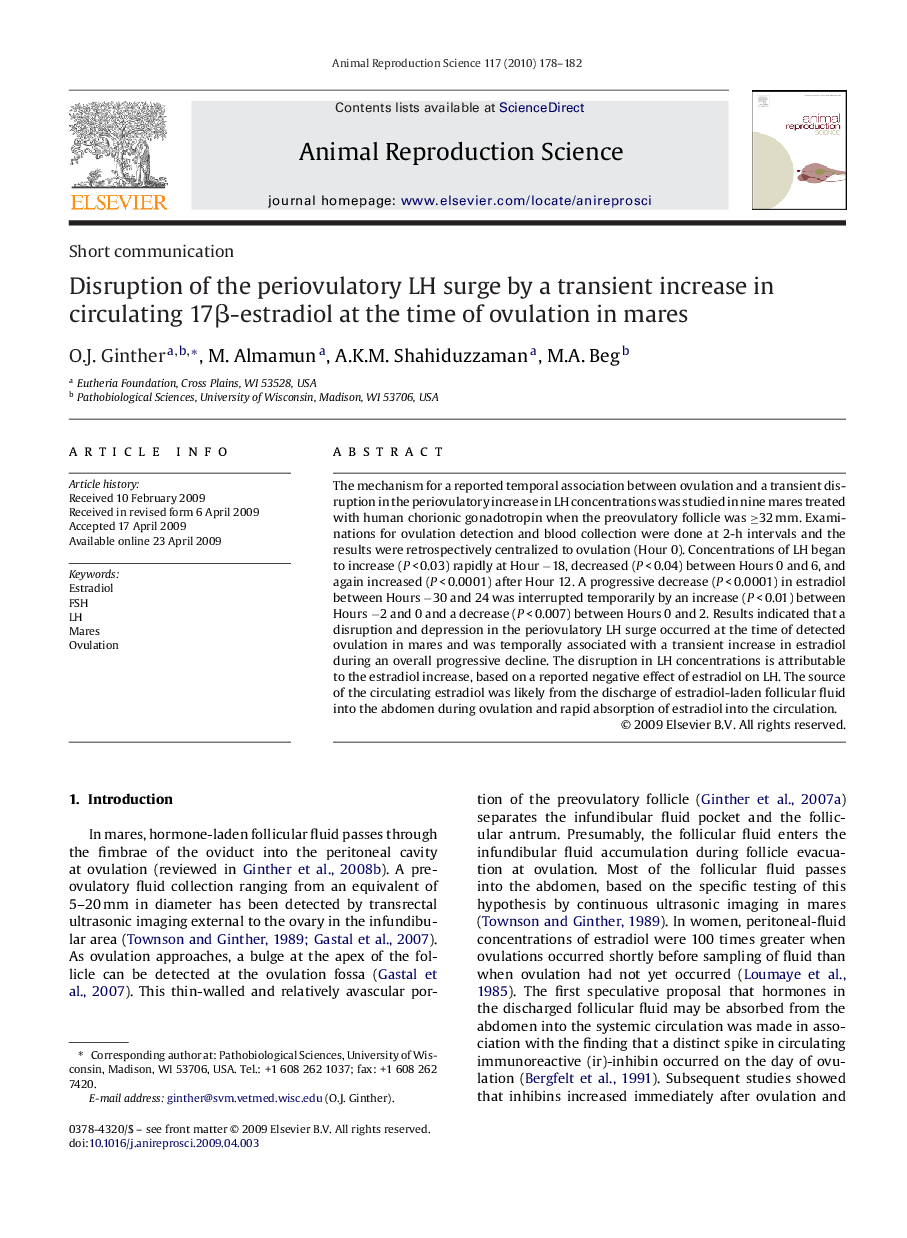| Article ID | Journal | Published Year | Pages | File Type |
|---|---|---|---|---|
| 2073992 | Animal Reproduction Science | 2010 | 5 Pages |
Abstract
The mechanism for a reported temporal association between ovulation and a transient disruption in the periovulatory increase in LH concentrations was studied in nine mares treated with human chorionic gonadotropin when the preovulatory follicle was â¥32 mm. Examinations for ovulation detection and blood collection were done at 2-h intervals and the results were retrospectively centralized to ovulation (Hour 0). Concentrations of LH began to increase (P < 0.03) rapidly at Hour â18, decreased (P < 0.04) between Hours 0 and 6, and again increased (P < 0.0001) after Hour 12. A progressive decrease (P < 0.0001) in estradiol between Hours â30 and 24 was interrupted temporarily by an increase (P < 0.01) between Hours â2 and 0 and a decrease (P < 0.007) between Hours 0 and 2. Results indicated that a disruption and depression in the periovulatory LH surge occurred at the time of detected ovulation in mares and was temporally associated with a transient increase in estradiol during an overall progressive decline. The disruption in LH concentrations is attributable to the estradiol increase, based on a reported negative effect of estradiol on LH. The source of the circulating estradiol was likely from the discharge of estradiol-laden follicular fluid into the abdomen during ovulation and rapid absorption of estradiol into the circulation.
Related Topics
Life Sciences
Agricultural and Biological Sciences
Animal Science and Zoology
Authors
O.J. Ginther, M. Almamun, A.K.M. Shahiduzzaman, M.A. Beg,
